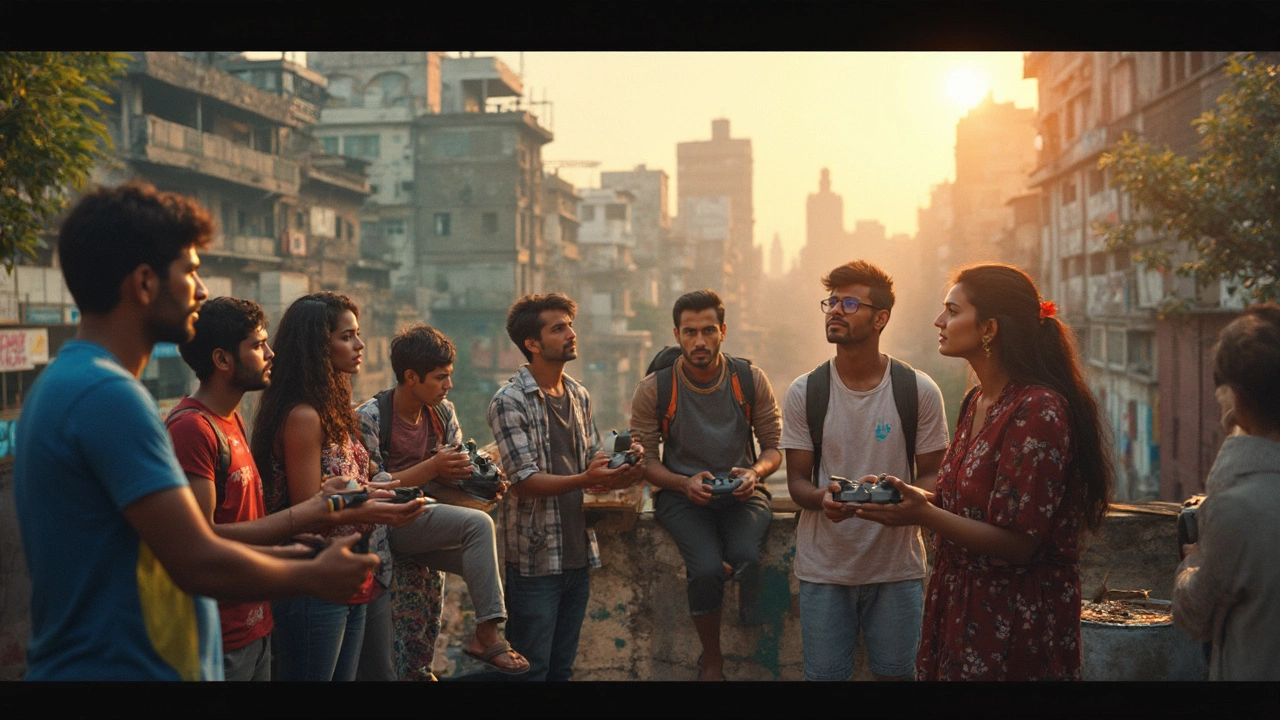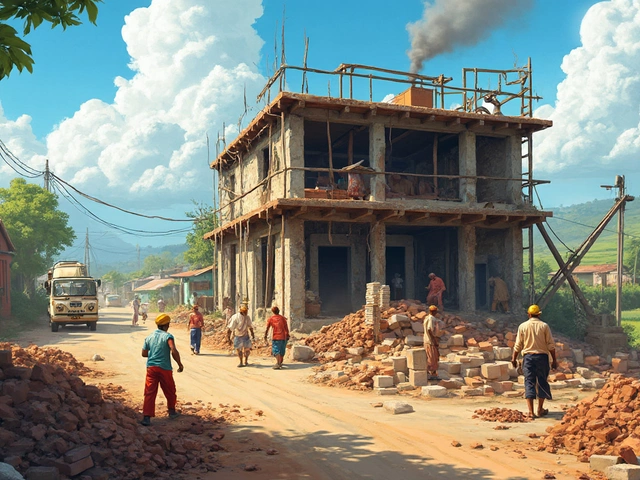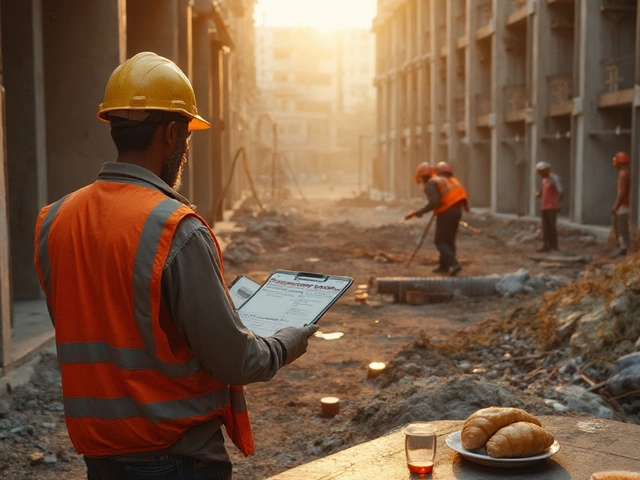Drones have completely changed how we click photos and shoot videos, especially in places like India where landscapes and events make for epic shots. But if you’ve ever looked up which brand to get, DJI just keeps popping up as the top name. That’s why, when talk of DJI getting blacklisted started spreading, Indian drone lovers began to worry. What’s actually going on with DJI? Why did America decide to put the company on a blacklist, and does it really affect you in India?
If you’re thinking about drone photography, this isn’t just some news for tech nerds or policy geeks. America’s ban on DJI has real-world side effects: from price jumps to headaches finding spare parts and updates. Imagine your go-to camera suddenly vanishing from stores or not getting updates—pretty annoying, right? We’ll break down what set off the ban, how it changed the drone scene in India, and some tips to keep your drone game strong even with all these new rules.
- What sparked DJI’s blacklisting?
- How did this affect Indian drone photographers?
- Import headaches and workarounds
- Local alternatives (and how they compare)
- Tips for drone use in India after the ban
- What the future holds for drones in India
What sparked DJI’s blacklisting?
Back in December 2021, the US government officially added DJI to the “Entity List.” Sounds dramatic, right? Basically, it’s an export blacklist, and it means American companies can’t do business with DJI without a special license that’s nearly impossible to get. So, what exactly did DJI do to land on this list?
The main reason was over allegations connected to human rights violations. The US said DJI’s drones were linked to surveillance efforts in China, especially in regions like Xinjiang, where there were serious concerns about privacy and monitoring of local populations. The American Commerce Department stated that tech from DJI was used to “enable wide-scale human rights abuses.” That was the big trigger, and it made headlines fast.
But there’s more to it. Security was another big worry. US officials flagged drones—especially those as popular as DJI’s—as potential risks. They worried that sensitive data from these drones could end up with foreign governments. DJI said these claims were off the mark, but the US government wasn’t convinced.
Here’s a quick look at the key events that led to the DJI blacklisted status:
- 2017: US Army bans DJI drones for military use, citing cybersecurity issues
- 2019: US Interior Department grounds all Chinese-made drones, including DJI
- 2020: DJI is labeled a “national security threat” by some US lawmakers
- 2021: Officially blacklisted by the US Department of Commerce
If you’re into numbers, check out this data table showing the growth of DJI sales up to that point—which helps explain why the US paid so much attention:
| Year | Global Market Share (%) | Revenue (approx., USD billion) |
|---|---|---|
| 2017 | ~70% | 2.7 |
| 2019 | ~74% | 3.3 |
| 2021 | ~76% | 3.8 |
Because DJI dominated the world market, whatever happened with them sent ripples across every country where drone photography was getting big—including India. The reasons for the ban might sound like international politics, but if you use DJI drones, it suddenly became a lot more local—and a lot more personal.
How did this affect Indian drone photographers?
When the U.S. put DJI on its blacklist in late 2021, you probably noticed ripple effects in DJI blacklisted searches and the real world. Drones didn’t just disappear, but suddenly, it was way harder to get your hands on a new DJI or even basic accessories. Importers faced loads of red tape, and prices for DJI gear shot up by 20% to 30% in some Indian stores. You wanted a replacement propeller or a new battery? Be ready to overpay or wait weeks.
In the Indian drone photography crowd, lots of folks run small businesses—covering weddings, real estate shoots, or mapping farmland. With DJI dominating over 70% of the global drone market, most already relied on their products. Once the blacklisting kicked in, warranty claims started getting denied more often, software updates became patchy, and access to new models dried up.
Here’s a quick look at what changed for Indian drone users after DJI was blacklisted:
- Imported DJI drones got stuck at customs; clearing them took weeks or never happened at all.
- Service centers struggled to get spare parts, slowing repairs to a crawl.
- Some firmware updates, essential for using Indian airspace safely, dropped off the radar.
- Rental companies raised their prices because their fleets became expensive to maintain.
What does that mean for your pocket and daily work? This table shows a comparison before and after the blacklist news broke:
| Factor | Before Blacklist (2021) | After Blacklist (2022-2025) |
|---|---|---|
| Average Price for DJI Mini 2 | ₹45,000 | ₹57,000–₹65,000 |
| Time for Spare Parts | 2–5 days | 2–5 weeks (sometimes not available) |
| Number of Service Centers | 8 (active) | 5 (with delays, limited parts) |
| Firmware Update Availability | Timely & regular | Sporadic or delayed |
Some professionals started holding onto their old DJI models, fixing them up instead of trying to buy new. Others began scouting for alternatives, but none quite matched DJI’s camera quality or easy controls. Community groups online became hot spots for swapping parts and sharing ways to stay in the air without breaking the rules or the bank.
Bottom line: if you worked with drones in India, the blacklist made your life a lot more complicated, raising your costs and limiting your choices at just the wrong time—when drone photography is booming in the country.
Import headaches and workarounds
The DJI ban didn’t just cause buzz online. It landed like a ton of bricks for drone photographers in India, especially those mid-project or running professional gigs. The biggest headache? Getting DJI drones and spare parts into the country suddenly went from tricky to nearly impossible. Customs started holding shipments. People placing orders from the official DJI site or big international e-commerce players got stuck; either packages were delayed for months or returned altogether.
Most Indian stores ran out of stock for popular DJI models like the Mini 3 Pro or Mavic series. If you tried buying one, prices shot up by almost 30-40% in some cases. Why? Sellers switched to grey market options, and with extra layers of middlemen, costs went north fast. Warranty? Forget about it. You break a propeller or gimbal, good luck finding original replacements without paying double or risking fakes.
Here’s a quick look at how things changed, straight from local store data:
| DJI Model | Price in 2022 (Rs.) | Price in 2024 (Rs.) | Retail Availability (2024) |
|---|---|---|---|
| Mavic Air 2 | 68,000 | 92,500 | Low |
| Mini 3 Pro | 75,000 | 105,000 | Out of stock |
| Phantom 4 Pro | 155,000 | 210,000 | Rare |
Finding workarounds became a thing. Some pros ask friends traveling abroad to sneak in a drone as ‘personal luggage,’ but this is risky—Indian customs aren’t clueless, and if you’re caught, you could lose your gear or pay a fine. Others order parts through lesser-known online suppliers, but be careful: software updates from DJI’s official app may not work if the device isn’t registered in a supported country, which means you could get stuck with old firmware.
If you’re looking to avoid these headaches, keep these tips in mind:
- Buy from legit, registered Indian sellers who offer some kind of local support—even if it costs a bit more.
- Double-check import paperwork whenever you order anything related to drones from abroad.
- Join online drone forums or WhatsApp groups. Folks there often share up-to-date info on which models are available and where to find reliable repair shops.
- Stock up on essential spare parts (extra propellers, batteries) with your initial purchase so you’re not left stranded.
The biggest takeaway: if you’re serious about DJI blacklisted issues and want to keep your drone running, keep your ear to the ground and be flexible. The situation is changing fast, and what works today might not work a month from now.

Local alternatives (and how they compare)
So DJI's off the table or suddenly costs a bomb? You’re not stuck without options. In India, the drone market has seen a bunch of local brands step up their game thanks to the ban. Let’s break down your options if you still want reliable drone photography and don’t want to gamble on secondhand or imported DJI gear.
Garuda Aerospace and ideaForge are the two names that stand out. ideaForge has made actual surveillance drones for the Indian Army, so their build quality is pretty solid. Garuda focuses on both agriculture and aerial photography, and their drones are becoming more visible at Indian weddings and film shoots.
Here’s a quick look at how some popular models stack up:
| Brand | Model | Flight Time (min) | Range (km) | Camera Quality | Approx. Price (INR) |
|---|---|---|---|---|---|
| ideaForge | Q Series | 25-30 | ~3 | HD/4K (modular) | 3-8 lakh |
| Garuda Aerospace | Droni | 25 | 2 | 4K | 1-2 lakh |
| DJI (before ban) | Mavic Air 2 | 34 | 10 | 4K | 1-1.2 lakh |
It’s clear: DJI models still edge out Indian brands in range and sometimes camera tech. But local drones are catching up fast, especially when you want quick support or drone repair—the service is much better because you’re dealing with local teams, not overseas customer care.
One big perk with Indian drones is the way they handle paperwork. Many are designed for Indian drone laws, so you’re less likely to get stuck with import customs or technical compliance hassles. Plus, you’re helping fuel homegrown tech.
- If you need pro-level video (think Bollywood or big ad shoots), you might still want to hunt down a good DJI, at least until an Indian model matches that performance.
- For basic aerial shots, weddings, or real estate work, local drones work just fine and you’ll save yourself a lot of stress.
The real change is in how these companies listen to users. If you’re stuck or need a tweak? It’s much easier to get someone on the line who understands your weather, your issues, and your style of work. That’s something international brands rarely offer.
Tips for drone use in India after the ban
If you’re into drone photography and worried about the DJI blacklisted mess, you aren’t alone. Using drones in India has gotten a bit trickier, but you can still get solid results if you follow the right steps and stay mindful of the new restrictions.
- Stick with DGCA rules: Flying a drone in India means following the Directorate General of Civil Aviation (DGCA) rules. Register your drone on the Digital Sky platform, get the right permit, and make sure your unit has a Unique Identification Number (unless it’s in the Nano category, under 250 grams).
- Don’t skip import laws: If you somehow get your hands on a DJI drone after the ban, customs can seize it. Always check updated policies, and be ready for stricter checks by customs—also, aftermarket parts might get flagged too.
- Learn your local airspace: Cities and states set their own drone limits. In many places, flying drones near airports, military bases, or government buildings can get you in serious trouble. Use the No Permission, No Takeoff (NPNT) system to check if you’re allowed to fly where you are.
- Explore made-in-India drones: After the DJI ban, Indian companies like ideaForge and Garuda Aerospace started making serious moves. Their drones might not be as fancy as high-end DJI models yet, but they’re improving and usually easier to repair or maintain locally.
- Watch for firmware updates (or lack thereof): If you already fly a DJI drone, you might not get updates or support. Losing security patches or GPS fixes is no joke—especially if you use drones for work. Back up your device, and avoid risky flights if your tech isn’t working right.
- Double-check insurance: Drones are valuable and accidents happen. Since the ban, some insurers in India need you to state the brand and source. Always update your policy if you switch brands or get a new unit.
- Join legit communities: Whether it’s online forums, WhatsApp groups, or hobby clubs, community helps you keep up with rule changes, troubleshoot your drone, and avoid mistakes that cost you money or get you fined.
Following these steps won’t solve every headache, but it keeps you flying legal and avoids heavy fines or gear loss. The landscape’s changing, but with a bit of homework, your drone game won’t have to stop.
What the future holds for drones in India
If there’s one thing you can count on, it’s that Indians love new tech. The DJI blacklisted saga shook up the market, but it’s also giving local players a huge push. Companies like ideaForge and Garuda Aerospace are pumping out drones for everything from farming to mapping, and even delivery tests with Swiggy are in the works. These aren’t just buzzwords; the Indian drone industry is predicted to hit $1.8 billion by 2026, doubling in just five years, according to a 2024 FICCI report.
The Indian government, too, is jumping in with both feet. In 2021, they rolled out new Drone Rules, making it less painful to register drones and fly them legally. Plus, there's the Production Linked Incentive (PLI) scheme, which basically means companies get rewarded for making more local drones. Here’s how things look on the ground right now:
| Year | Number of Drone Startups | Market Value (USD) |
|---|---|---|
| 2021 | 60 | $870 million |
| 2023 | 140+ | $1.3 billion |
| 2026 (Projected) | 250+ | $1.8 billion |
Importing foreign drones, especially from blacklisted brands, is only getting tougher. But this is speeding up desi innovation. Local models are closing the gap on camera quality, battery life, and flying range. A few Indian drones are now being used by the military for border surveillance and by farmers for spraying pesticides.
Suresh Prabhu, ex-civil aviation minister and now involved in tech policy, put it simply:
“India’s drone future won’t be about catching up, but about leading the world in smart, homegrown solutions.”
If you’re into drone photography, it’s smart to watch who’s launching what. Stay updated on local laws—fines for breaking drone rules can now go up to Rs 1 lakh per incident. And keep an eye on new features from Indian brands because they’re rolling out things like auto-pilot for crop spraying and real-time video streaming for inspections.
So, while things look shaky for imported drones, especially DJI, local options are popping up fast. If you’re buying now, research warranty and spares support, because that’s where Indian companies are hustling to build trust. And don’t get lazy on paperwork; DGCA’s DigitalSky platform is a must for legal flights. The future of drones in India? It’s looking more local, more creative, and way more accessible than before.





